Recent Fire Damage Posts
How To Use a Fire Extinguisher
2/13/2024 (Permalink)
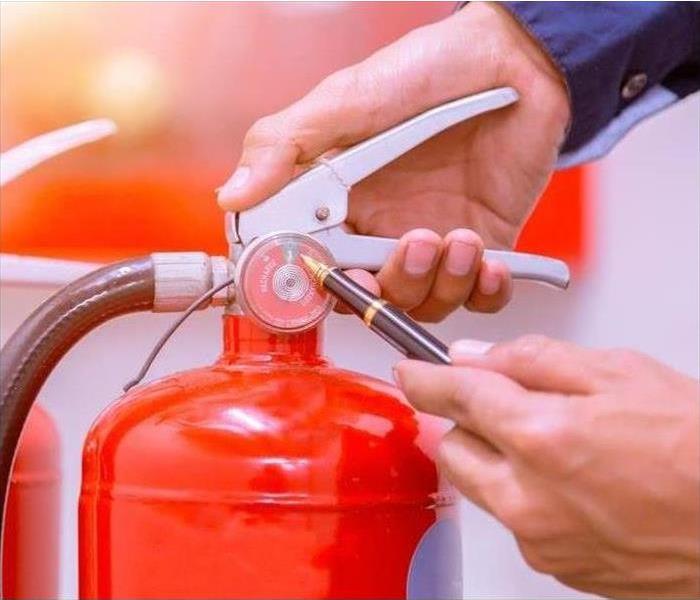 Take time now to prepare for the unexpected.
Take time now to prepare for the unexpected.
As a homeowner in Austin, TX, you should prioritize safety, for both your family and your property. That includes preparing ahead of time for a home fire. While you consider evaluation routes and emergency contacts, it's also beneficial to supply your home with a fire extinguisher as the first line of defense. The red canisters may seem a bit intimidating, but they are designed to help residents. Here are a few tips for wielding one with better care.
1. Pick Appropriate Locations
You want to have extinguishers near areas likely to have a fire; therefore, consider purchasing one for the kitchen and garage. These locations often have several appliances or electrical equipment capable of exposing the house to fire damage. Is your place two stories? If so, put one upstairs in a spot that is easy to access; furthermore, make other family members aware of where they are, and teach them how to use them.
2. Review Procedures
Don't expect to know how to handle these containers. Practice with them. Pick them up and examine the parts. You want to know if they will be able to physically use the device. If it's too heavy consider investing in smaller units. Next, go over the steps for using a fire extinguisher. A popular phrase is P.A.S.S.: pull the pin, aim low, squeeze the handle, and sweep from side to side. As you release the agent, you want to stay as close to the base of the flame as possible. This could help eliminate the flames.
3. Call for Help
Once you've suppressed the blaze, call in a fire restoration company to inspect the premises. The workers can test the area to determine the extent of the problem and recommend recovery services. Whether it's a kitchen fire or lightning strike, they can offer assistance in repairs as well as how to salvage ruined materials. In fact, they have special equipment to remove smoky aromas and remove soot from walls and ceilings.
Take time now to prepare for the unexpected. Purchase safety equipment, and learn how to use a fire extinguisher. It could save your property.
3 Types of Smoke Odor Removal
6/26/2023 (Permalink)
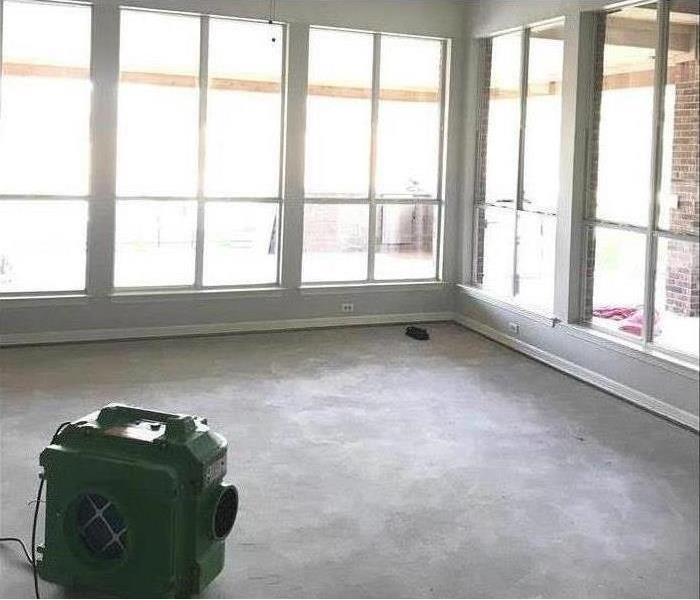 Deodorizing in Austin, TX
Deodorizing in Austin, TX
Smoke Odor Removal
After a fire, home deodorization can be an important step toward getting your Austin, TX, home back in order. Fortunately, a local fire damage restoration service can help with this process. Here are some tools you may see them use.
1. Special Cleaners
During the restoration process, the affected area can be washed with special cleaning solutions. These are designed to help break down and remove soot, as well as help remove odors. The methods used to apply these cleaners will depend on the type of material being cleaned. Curtains and other cloth items can be washed while furniture may need upholstery cleaning. Large solid furniture and walls may be wiped down.
2. Ozone Machine
Even after everything has been cleaned, odor may still linger in the air. The next step of home deodorization is the use of an ozone machine. An ozone machine works by charging oxygen molecules so they temporarily break apart and then recombine with new oxygen molecules to form a triple pairing instead of a double. The new third molecule can then combine with the odor molecule and disperse, leaving the air smelling fresher than before.
3. Deodorizing Paint
Another way to help get rid of fire or cigarette smoke odor is to use a deodorizing paint. After the damages are cleaned up and any necessary repairs are made, the restoration team will begin making your home look as though the fire never occurred. Part of this may include repainting the space, and a deodorizing paint can help prevent the return of any unwelcome odors.
With the help of the right cleaners, an ozone machine, and a good paint, the restoration team working on your home deodorization can restore it to pre-fire conditions. With a little time and work they can have your home looking “Like it never even happened.” Not even a lingering odor should remain. If you have any further questions these professionals can help.
How to Clean Your Electronics After a Fire
6/23/2023 (Permalink)
Between tossing everything that has become damaged and hiring a fire restoration service to handle the most difficult aspects of the task, any fire cleanup job is deeply stressful. Often getting lost during the process is the recovery of precious electronics. Never trash them until you have confirmed they are impossible to repair.
Smoke Damage and Electronics
When smoke infects our digital gadgets, it impacts them in three ways:
1. Magnetization, leading to short-circuiting.
2. Corrosion, dramatically shortening their lifespans.
3. Overheating, caused by a thick layer of soot.
Any items displaying evidence of the above conditions should be disposed of, but those that do not may be rehabilitated. Should a fire strike your home in New Sweden, TX, remember that inspecting your beloved digital toys should automatically be included as part of the fire cleanup.
Cleansing Electronics of Smoke Damage
First, disconnect the device you wish to salvage and remove the batteries or any other existing power source. With a soft, dry towel, wipe your gizmo’s exterior of any residue, then use an air compressor or blow dryer to clear out any outlets or vents. Once this has been done, you can test your device by switching it on. Never do this, however, until the cleaning stage has been completed.
Sadly, your beloved item will likely never operate the way it once did, as ash is virtually guaranteed to compromise proper functioning. Should you detect unusual behavior from your device, have it inspected by a product specialist. You may have taken out warranties on your most prized pieces, but also note that many home insurance policies cover electronics-related losses, so check your provisions.
It is deeply frustrating when possessions get destroyed, but computerized equipment can sometimes be saved. Never let the hectic nature of a fire cleanup undertaking prevent you from granting your favorite gadgets one last shot at life.
Preventing House Fires: Essential Tips for a Safe Home
6/22/2023 (Permalink)
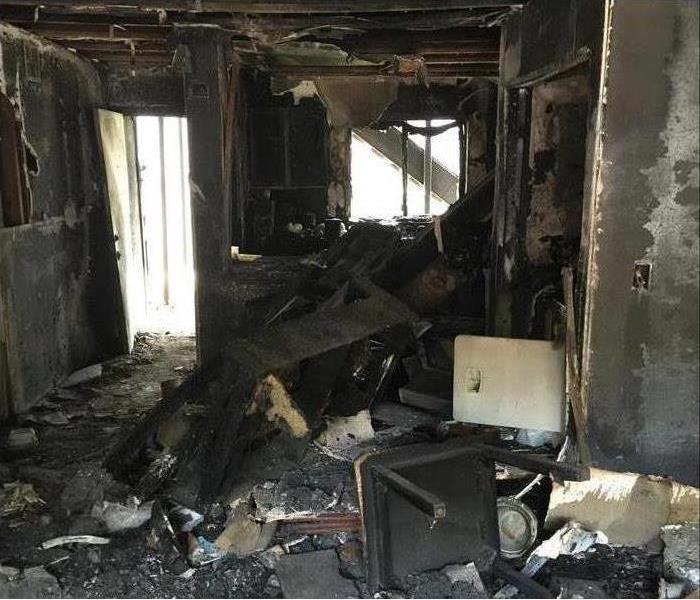 Preventing Your Home from Resembling This.
Preventing Your Home from Resembling This.
A house fire can be a devastating event, causing immense damage and putting lives at risk. However, by taking proactive measures and implementing fire prevention strategies, you can significantly reduce the chances of a fire breaking out in your home. Here are some essential tips and guidelines to help you create a safe living environment and protect your loved ones from the threat of house fires.
- Install and Maintain Smoke Alarms: Smoke alarms are your first line of defense against a fire. Install smoke alarms on every level of your home, including inside bedrooms and outside sleeping areas. Regularly test the alarms to ensure they are functioning correctly and replace batteries at least once a year.
- Develop a Fire Escape Plan: Prepare and practice a fire escape plan with all members of your household. Identify primary and alternative escape routes from each room, and establish a designated meeting point outside. Educate everyone on how to react in case of a fire and emphasize the importance of staying low to avoid smoke inhalation.
- Exercise Caution in the Kitchen: Kitchen fires are a common cause of house fires. Never leave cooking unattended, and keep flammable objects, such as towels or curtains, away from the stove. Regularly clean grease buildup from cooking surfaces and ensure that all appliances are in good working condition.
- Practice Electrical Safety: Faulty electrical systems and appliances can trigger fires. Have a professional inspect your electrical system periodically, especially in older homes. Avoid overloading outlets and extension cords, and replace damaged cords or appliances immediately. Unplug devices when not in use and refrain from running wires under rugs or furniture.
- Be Mindful of Heating Sources: Heating equipment, such as space heaters and fireplaces, should be used with caution. Keep flammable materials at a safe distance from heat sources and never leave them unattended. Have chimneys and flues cleaned and inspected regularly, and ensure that space heaters are placed on a non-flammable surface.
- Store Flammable Materials Properly: Flammable substances, such as gasoline, paint thinners, or cleaning agents, should be stored in well-ventilated areas away from heat sources. Use approved containers and keep them tightly sealed. Avoid hoarding excessive amounts of flammable materials.
- Maintain Dryer Safety: Lint buildup in dryer vents can lead to a fire hazard. Clean the lint trap after every load and periodically inspect and clean the dryer vent system. Ensure proper venting to the outside and avoid using dryers when you are away from home or sleeping.
- Install Fire Extinguishers: Place fire extinguishers in key locations, such as the kitchen and garage, and learn how to use them effectively. Choose the appropriate type of extinguisher for different fire classes and have them inspected and maintained regularly.
Preventing a house fire in Pflugerville, Texas requires a proactive approach and adherence to fire safety practices. By implementing the essential tips outlined in this blog, you can significantly reduce the risk of a fire breaking out in your home and protect your family and property. Remember, fire prevention is an ongoing commitment, so regularly review and update your fire safety measures to ensure a safe living environment for years to come.
Understanding Smoke Damage
2/8/2023 (Permalink)
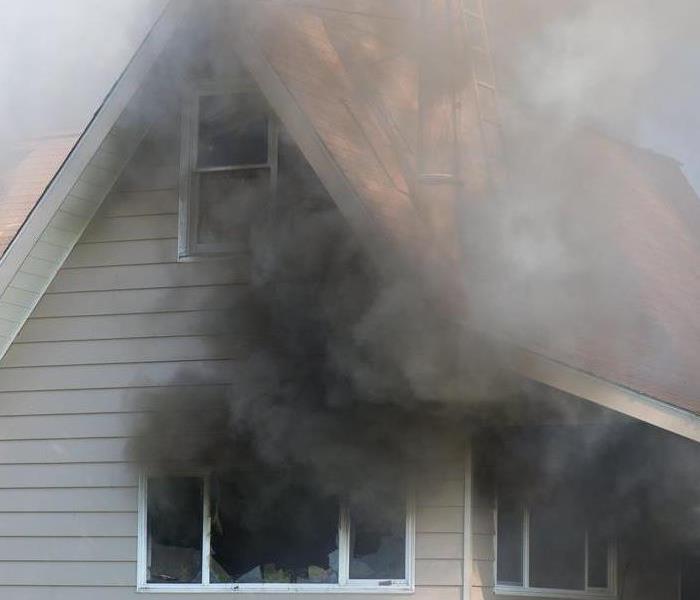 Smoke damaged home after a fire loss.
Smoke damaged home after a fire loss.
Smoke damage is not something you want to deal with. Your home can be in danger of serious smoke and water damage after a fire. It is important to do everything you can to handle the situation correctly.
Our smoke damage expertise and experience allows us to inspect and accurately assess the extent of the damage to develop a comprehensive plan of action. We have years of experience working on all types of structures from residential homes, apartments, office buildings and more! There are many different types of smoke and each requires different techniques for cleaning up.
Smoke and Soot
Smoke damage can be hard to detect because it can penetrate into the smallest of cracks and crevices. It is important to know that the damage smoke causes is not limited to what you can see. The structure of your home may have been compromised by the fire, and this could result in structural damage as well as an increased risk for mold growth. This means that even if there is no visible evidence of soot or ash problems, it’s still possible that invisible damage has occurred within your walls or ceilings.
Smoke also tends to collect on surfaces like ceiling tiles, wall coverings and furniture fabrics which means that even if all visible signs have been removed from a room there may still be significant amounts of residue left over on these surfaces which will need cleaning before you move back in.
Experience and Expertise
If you are in need of cleaning services after a fire or smoke intrusion, turn to the experts at SERVPRO of Pflugerville. Our technicians have experience and expertise for your post-fire restoration services. They have been specially trained to assess and properly clean your property following a loss. We understand that every situation is unique, we are here to help 24/7.
We will work closely with you throughout the entire process to ensure our team understands exactly how much time and resources are needed for each step of the process. From initial inspection and evaluation through completion of all necessary repairs, we will provide exceptional customer service while balancing budgets and schedules to meet your unique needs.
We provide several services related to post-fire and water damage.
What causes Smoke Damage?
Smoke damage is often caused by a fire, but it can also be the result of a malfunctioning appliance or even a candle. It's important to understand the causes and effects of smoke in your home so that you can take the appropriate precautions to remove it from your home and prevent further damage.
Different Types of Smoke
When you see smoke, you know that something bad is going on. Smoke from fires contains a number of different chemicals and can cause serious health problems if inhaled in large quantities. Smoke from the fire can contain carbon monoxide, hydrogen cyanide and nitrogen dioxide among other chemicals that are harmful to humans.
The type of smoke may greatly affect the restoration process. Smoke from a fire can be classified as white, black or brown. White smoke is caused by burning gases, such as the burning of plastic or rubber. Black smoke is caused by burning carbon-based materials, such as wood or paper. Brown smoke comes from materials containing soot.
If you have questions about smoke, give the professionals at SERVPRO of Pflugerville a call today! If you believe that smoke or soot damage has affected your property, contact us to schedule an inspection and begin the process of restoration.
What To Do If You Smell Gas in Your Home
6/27/2022 (Permalink)
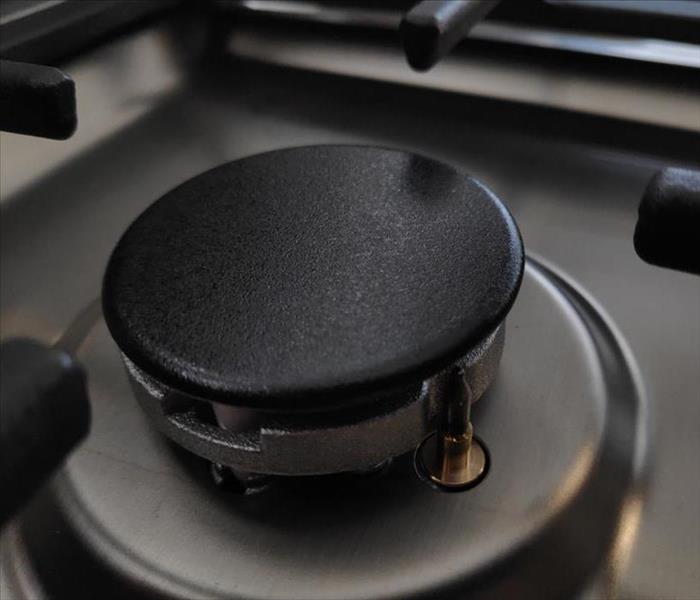 Make sure all the burners are off.
Make sure all the burners are off.
Gas leaks can happen any time of the day, in any home that uses gas for heating or cooking. Leaks are surprisingly common across the country, even right here in Pflugerville, TX. Do you know how to avoid a gas fire in the event of a leak inside your home?
What To Do If You Suspect a Natural Gas Leak
The gas you use in your house is odorless. That notorious rotten-egg smell has been added to the gas to alert you to leaks. If you smell this distinctive odor or hear a hissing sound anywhere that gas is used in your home, you may have a gas leak.
Here's what to do in the event of a leak:
1. Avoid Potential Sparks
Leave all electrical switches, appliances and lights untouched. Flipping a light switch or even opening your garage door can cause enough spark to ignite a gas fire.
2. Turn Off the Gas
If you're near the stove, make sure all the burners are off. If you feel it's safe at the time, shut off the gas at the meter outside your house.
3. Ventilate Your Home
Allow the gas to disperse; open all doors and windows and leave them open.
4. Leave the Building
Get outside and away from the house before using your phone. Confirm that all family members and pets are also outdoors at a safe distance from the home.
5. Call for Help
Once everyone is safely out of the building, report the leak to your gas company. If you think there is still a fire risk, dial 911.
Your local fire damage restoration experts recommend that you follow these simple safety steps when you smell gas in your residence. Always treat a suspected leak seriously. Protect your family and your home by knowing the signs of a leak and what actions to take to prevent a gas explosion.
Important Things You Should Know About Fire Insurance
6/19/2022 (Permalink)
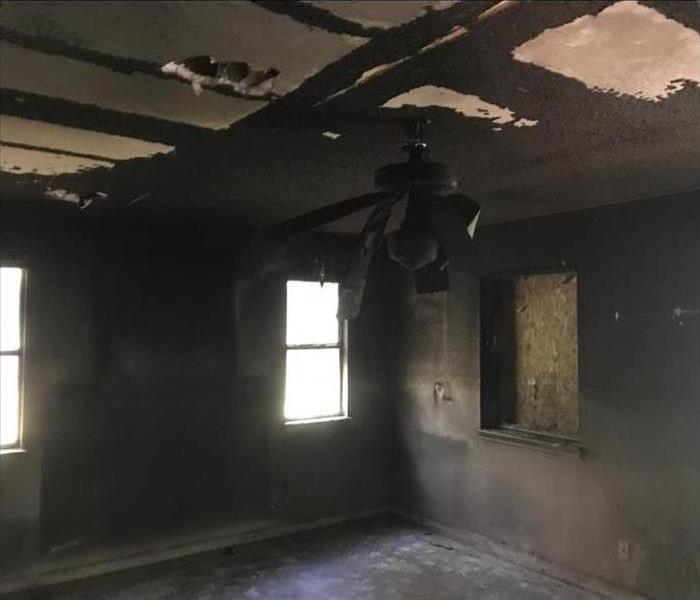 An insurance policy will protect you financially against losses you experience in your home.
An insurance policy will protect you financially against losses you experience in your home.
Fire Insurance Coverage
To disasters and emergencies, you are grateful to have insurance coverage. An insurance policy will protect you financially against losses you experience in your home. Your plan should cover the cost to repair or replace items in a variety of incidents. When it comes to fire damage, your policy can spare you a lot of financial grief and stress. However, there are some instances when your policy may not pay for all fire-related damages.
1. Coverage of the Dwelling
Your homeowner's insurance policy will cover damages that occur in your house due to a fire. This coverage is good up to a certain limit. Make sure you understand what this limit is so you know whether your policy will cover all fire damage restoration needs. The plan will cover any parts of the home that the fire affected, even if the fire started elsewhere and moved to other parts of the house.
2. Detached Structures
If a fire damages or destroys structures that are not attached to your home, you should still have coverage. These may include garages separate from the home, sheds, and other buildings on the property.
3. Fire Damage to Personal Property
A fire can be destructive, not only destroying the home and building materials themselves but other items you own. This list includes belongings such as clothing, furniture, electronics, books, keepsakes and much more. Your coverage should pay to replace or fix these items.
When Coverage Does Not Apply
In some circumstances, you cannot expect your insurance plan to cover damage from a fire. If you deliberately start the fire, your plan will not pay to remove the effects of smoke damage or replace or repair any parts of the home. You may also need to buy supplemental fire insurance to pay for such damage if you live in an area prone to wildfires.
Fire damage can be severe. To avoid costly losses, make sure you have adequate homeowner's insurance.
7 Tips for Creating a Foolproof Fire Escape Plan
6/6/2022 (Permalink)
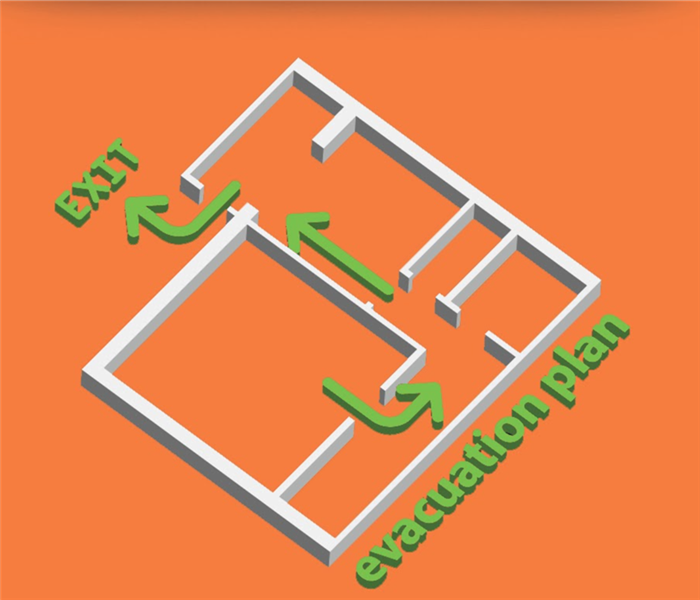 Create a fire escape plan for your home.
Create a fire escape plan for your home.
Creating a Fire Safety Plan For Your Home
A fire can break out at any time, so it's vital to be prepared for any emergency scenario. Keep these tips in mind when creating a fire safety plan for your Manda, TX, home.
1. Install Smoke Alarms
A beeping smoke detector is your first indication of an emergency and sets off any evacuation plan, so have one outside every bedroom and on every level of your home. Test them monthly to ensure they function properly.
2. Inspect All Exits
Do a walk-through of your home and determine all exits, including windows and doors. For every room, mark at least two exit points to escape a fire.
3. Clear Every Escape Route
If a door or window is blocked by any item, it no longer becomes an escape route. If you notice obstructions in the way of these exits, clear them away for easy emergency use.
4. Determine Outdoor Meeting Area
Select an outdoor spot where everyone in the household will agree to meet in the event of a home fire. Set this area a safe distance away from the house and mark the spot on your fire escape plan so everyone is familiar with where to go.
4. Consider Everybody’s Limitations
Whether your household includes young children or older adults, bring everybody's safety concerns into the fold of your escape plan. If possible, assign someone to help those with limited mobility.
5. Memorize Emergency Numbers
Knowing the right emergency numbers to call can bring help right away when you need it.
6. Once Outside, Stay Outside
Make sure your family knows to stay outside once they have escaped. Only firefighters and fire damage mitigation professionals can determine when it is safe to re-enter a home.
7. Practice Fire Escape Drills
Put all your fire preparation to the test with periodic practice drills.
It's easy to keep your family safe with a thorough fire evacuation plan in place. Don't neglect these helpful tips when making yours.
Creating a Fire Escape Plan for Your Office
3/25/2022 (Permalink)
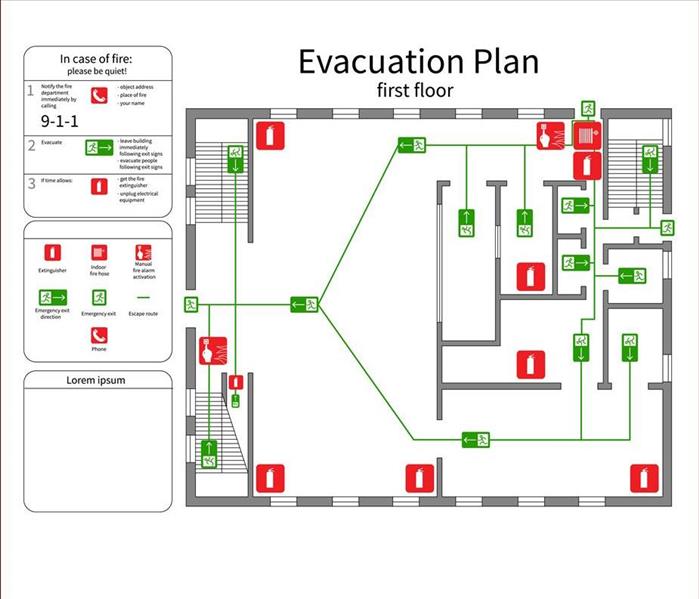 A good fire escape plan can give you additional peace of mind.
A good fire escape plan can give you additional peace of mind.
Developing a Fire Exit Strategy for Your Office
Imagine it’s a typical afternoon at your company in Cele, TX. It’s business as usual, with your employees hard at work. Suddenly, the smoke alarm jolts everyone out of their normal routine, but when they see there’s a fire erupting in the hallway, they realize this is no ordinary fire drill. They have to leave immediately. A good fire escape plan, previously disclosed to and rehearsed with the staff, can ensure everyone exits the building safely during an emergency, and you can account for all employees.
What Is It and Why Is It Necessary?
A fire evasion plan, also known as an emergency escape plan because it is helpful for any emergency evacuation, is a strategy for exiting the building in the event of a fire. When creating such a plan, the best routes for evacuation are identified, so that everyone can leave the building safely and in a timely manner.
What Is Considered a Good Plan?
A good fire escape plan often includes the following:
• Designated managers who step into action in the event of an evacuation and make sure everyone exits the building safely and meets at the pre-planned meeting area
• Designated exits, depending on one's location in the building at the time of evacuation
• A meeting place for employees once they have exited the building
• A communication plan to use in the event of separation
• Time to practice the exit strategy once or twice a year so that employees are familiar with what to do in the event they have to evacuate
After the Fire Has Been Extinguished, What’s Next?
A fire is a most unwelcome tragedy, but it does not have to mean the end of business as you have known it. Companies specializing in emergency restoration services are Here to Help and can make the fire damage look “Like it Never Even Happened.”
Hopefully, your business will never experience the misfortune of a fire. However, a good fire escape plan can ensure your employee's exit safely and give you additional peace of mind.
How To Remove Smoke Odor From Your Home After a Fire
2/21/2022 (Permalink)
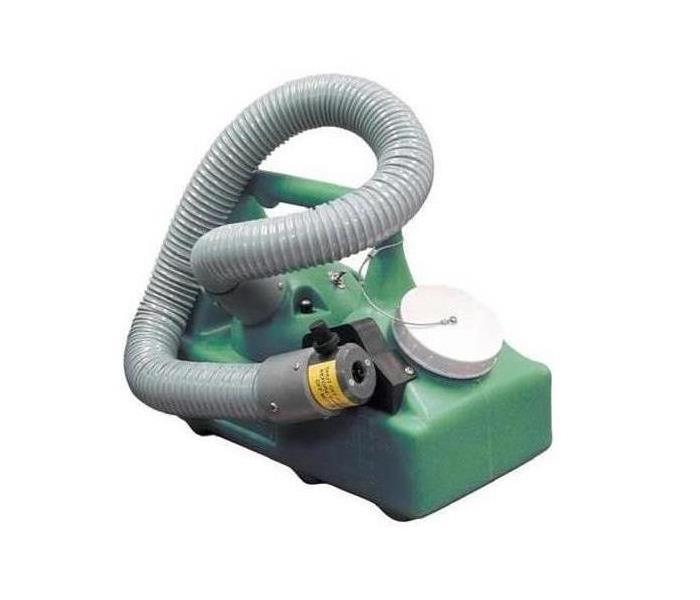 A thermal fogger can help to remove smoke odor from your home.
A thermal fogger can help to remove smoke odor from your home.
Smoke Odor Removal
If you have had a fire in your Manda, TX home, then it is likely you will have some smoke damage along with the fire damage. Because the smell of smoke can linger in your home long after a fire, you should hire a fire remediation company to help remove any odors. Here are some things that can help get rid of the smell.
1. Cleaning Your Belongings
An important step in smoke cleaning is to wash any smaller items that might be holding odor. This can include clothing or soft objects such as stuffed animals. You can have these items professionally cleaned and restored to their pre-fire condition.
2. Using Air Filtration Systems
While smoke particles can enter your belongings and make them smell, they can also linger in the air. Using an air filtration system for smoke cleaning can remove these particles and make the air in your home fresh again. These systems pull air through filters that catch impurities, including smoke particles, removing the odor from the air.
3. Using Thermal Foggers
Because smoke particles are small and can embed themselves into your home, a filtration system likely won’t be enough to completely remove the smoke odor. In this case, a thermal fogger can help. It uses a deodorizing treatment to counteract the scent of the smoke. Small particles of the treatment are created using heat and pressure which allows it to enter the same spaces as the smoke particles to effectively remove the odor.
4. Using Ozone Machines
Another piece of equipment used in smoke cleaning is the ozone machine. As its name suggests, this machine produces ozone to remove smoke odor. Ozone has three oxygen molecules, one of which can detach and alter the composition of other substances, allowing it to neutralize the smoke particles in your home.
While smoke damage can be a frustrating problem, a professional fire damage repair specialist will have the necessary equipment to remove the odor from your home.
How To Minimize the Risk of a Dryer Fire
11/2/2021 (Permalink)
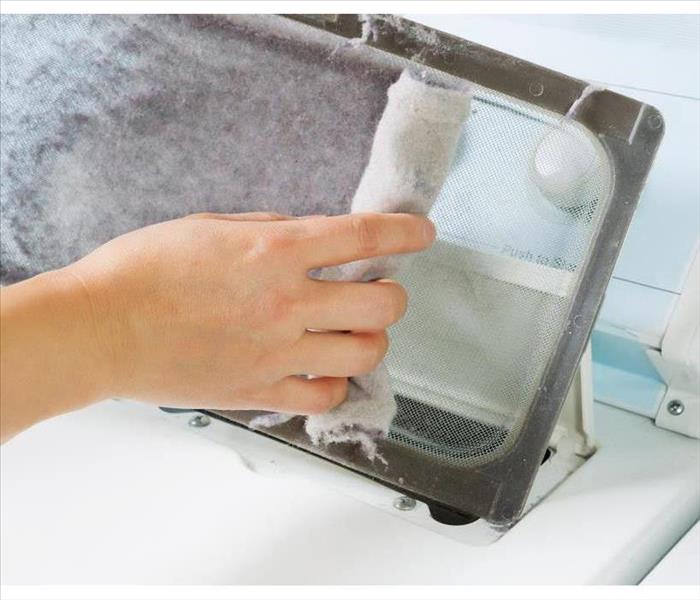 You should promptly clean the dryer vent to reduce the risk of a lint fire.
You should promptly clean the dryer vent to reduce the risk of a lint fire.
How to Reduce the Chances of a Dryer Fire
A dryer is a useful machine that many homeowners in Manda, TX, own. Although it’s typically an extremely efficient device, this appliance can be a potential fire hazard. To protect your home and minimize the risk of a dryer or lint fire, you should routinely clean your machine.
Diagnosing a Clogged Dryer Vent
A lint trap helps capture and store flammable lint until you can properly dispose of it. Despite this safeguard, the dryer vent may become clogged, increasing the risk of a dryer fire. Symptoms of this problem include the following:
- Lint accumulation outside the vent opening
- The presence of a burning smell while the dryer is in use
- Clothes consistently not drying fully after the initial cycle
- A dryer that feels hot to the touch
Cleaning the Vent
If you suspect a clog, you should promptly clean the dryer vent to reduce the risk of a lint fire. To begin the process, disconnect your dryer from the power source. Then, detach the hose and remove accumulated lint with a brush or vacuum.
Removing Internal Dryer Lint
Lint can also gather inside your dryer around the drum. This is dangerous because a spark from the motor, electrical heating elements or gas burners can easily ignite internal dryer lint.
To remedy this situation, unplug your dryer. Then, open the top or front of the dryer case, depending on your specific model. Once it’s accessible, you should carefully vacuum under and around the drum, being cautious not to disconnect any wires.
Avoiding Disaster
Fires are often traumatic, unpredictable events that can sometimes erupt suddenly and unexpectedly. Although no home is fully immune from potential fire damage, a lint fire is typically an avoidable disaster. Routinely inspecting your dryer and clearing away accumulated lint is an important, proactive fire prevention measure that can help spare every homeowner the agony of a dryer fire and a potentially lengthy cleanup and restoration project.
3 Types of Damage Covered by Commercial Insurance
9/13/2021 (Permalink)
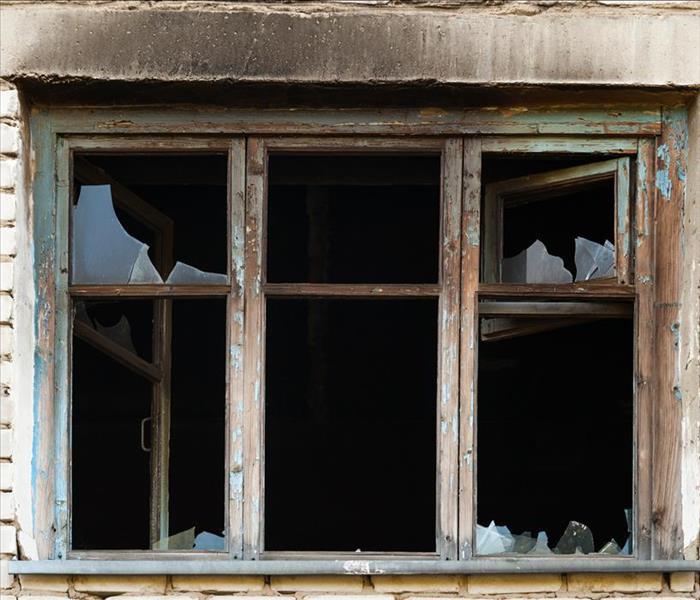 Businesses should anticipate all types of dangers that can significantly disrupt their operations.
Businesses should anticipate all types of dangers that can significantly disrupt their operations.
3 Types of Damage Covered by Commercial Insurance
Commercial buildings in New Sweden, TX, are potentially exposed to a variety of risks and dangers that threaten them and the property inside them. This is why business owners often obtain a commercial insurance plan that covers these hazards. Each business has different risks than others, so insurance providers offer several coverage additions for potential incidents.
1. Theft and Vandalism
Business owners are always at risk of theft that can target their physical property or stored funds. Additionally, the building and the equipment or property inside can also be vandalized by malicious parties. Crimes like these can be difficult to predict and recover from, so insurance coverage is recommended to make up for the losses. Note that in some cases, similar crimes like burglary and robbery are not included under a specific plan, so owners and insurance agents need to establish distinctions.
2. Fires and Related Damage
Another potential incident that can severely impact any business is fire. When a fire strikes the building or the equipment, the owner can file a commercial insurance claim to cover the profit loss. When dealing with the aftermath, the insurance provider and the client work together with fire damage remediation specialists to assess the loss and repair or replace the damaged property. There are exceptions, such as damage to nearby buildings and injury to third parties.
3. Natural Disasters
An existing insurance policy can also cover several natural disasters such as hurricanes, tornadoes, and earthquakes, as long the corresponding additions are made. These natural events can devastate any business. While they can be unpredictable, owners who live in risk areas for these disasters can take preventative measures in addition to obtaining insurance coverage. As with fire incidents, insurance agents and business operators collaborate with repair professionals to fix any damage.
Businesses should anticipate all types of dangers that can significantly disrupt their operations. Commercial insurance and additional policies can help these establishments get repairs and recover financially.
How Fire Sprinkler Systems Work
9/6/2021 (Permalink)
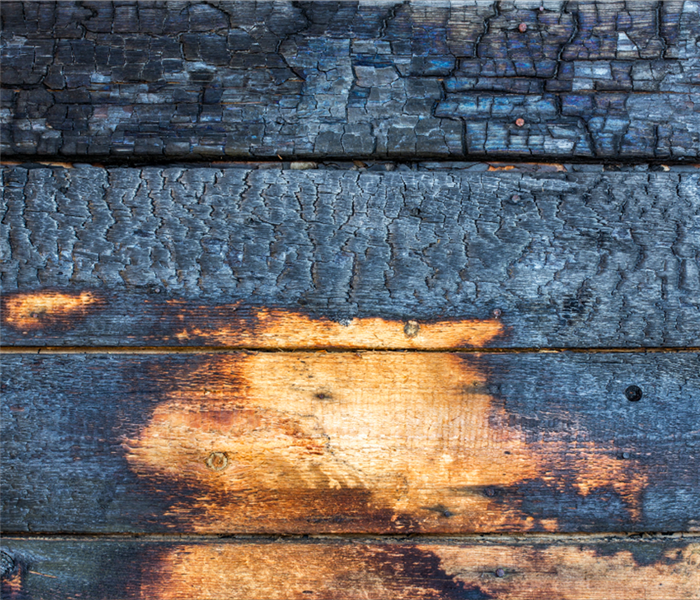 A fire sprinkler system can prevent a small fire from becoming a large fire; however, the water from the sprinkler system can damage your property.
A fire sprinkler system can prevent a small fire from becoming a large fire; however, the water from the sprinkler system can damage your property.
Fire sprinkler systems are an effective means of suppressing fires in commercial buildings and many states and localities have laws requiring their use. To get the most out of your sprinklers, it is important to have an understanding of how they work.
Sprinkler Heads Detect Heat
Many people mistakenly believe that their fire suppression system is activated when it detects smoke. However, sprinklers are triggered by an increase in temperature. When a fire occurs, the air above the fire is rapidly heated. This hot air rises and travels across the ceiling. Most sprinklers contain a glass bulb filled with a glycerin-based liquid that expands when heated. Air that has been heated between 135 and 165 degrees will cause the liquid to expand to the point where the bulb shatters and activates the sprinkler.
The Sprinklers Douse the Fire
Once activated, the sprinkler or sprinklers will spray pressurized water in an arc around the sprinkler head. The water is pressurized because this allows the water to reach a wider area and better douse the flames. Contrary to popular belief, only the individual fire sprinkler or sprinklers that have been activated will spray water. This makes it possible for a small fire to be doused without spraying water in the entire building, which can reduce the amount of fire sprinkler cleanup needed.
However, a special type of sprinkler, called a deluge sprinkler, is available for situations, such as buildings that contain extremely flammable materials. With a deluge system, every sprinkler in the building is set off when a fire alarm sounds. This allows for fires to be quickly extinguished in circumstances where taking a more cautious approach may be too dangerous.
A fire sprinkler system can prevent a small fire from becoming a large fire; however, the water from the sprinkler system can damage your property. If you need water damage remediation services, a professional in Pflugerville, TX, is ready to assist you.
How To Protect Your Home From Lightning
8/2/2021 (Permalink)
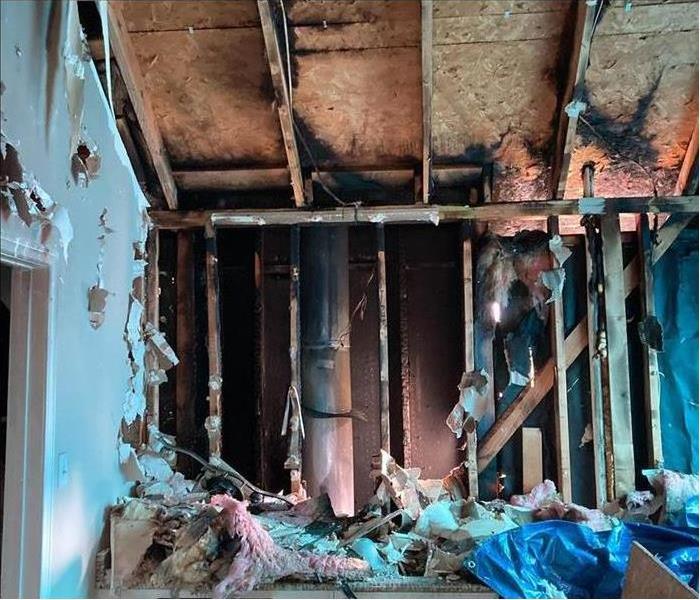 Fire damage to a home in Austin, TX.
Fire damage to a home in Austin, TX.
What happens when lightning strikes a home in Austin, TX? About 6,300 homes are struck each year without a resulting house fire. However, an additional 4,300 strikes each cause a residential lightning fire. Learn how to keep yourself and your home safe during this unpredictable, menacing weather event.
How Do I Protect Myself During a Storm?
When the weather turns bad outside, it is tempting to go about your normal business inside of the house. When you hear thunder, however, there are steps you should take to protect yourself and reduce the risk of lightning fire:
- Stay inside of your home, away from windows and doors. A good rule of thumb is to wait 30 minutes after you hear the last of the thunder to resume normal activities.
- If lightning strikes your home, it could cause a power surge. As a precaution, keep your distance from televisions, computers and other electrical devices. Do not take baths or showers, wash dishes or do laundry. Cellular phones are safe to use.
What Actions Do I Take If My House Is Hit?
If your house is struck, you will hear and feel a powerful boom. If you suspect the bolt has made contact with your home, take the following steps:
- Quickly check the health and safety of all family members and pets.
- Leave your home immediately if there is fire or smoke.
- Call 911 and report it, regardless of whether you see a fire. The fire department can determine if your home is safe.
- Contact your homeowner’s insurance agent, as damage is likely covered under your policy.
- Call a fire restoration specialist to assess your home. Even if a large house fire did not occur, there may be hidden damage in your roof or attic that could lead to further troubles down the road if not repaired promptly.
A lightning fire in Austin, TX, is a rare, but possible occurrence. By taking proper precautions during a storm and following correct procedures after a strike, you can keep your family safe and minimize the damage to your home.
3 Tips for Maintaining Your Home’s Furnace
6/29/2021 (Permalink)
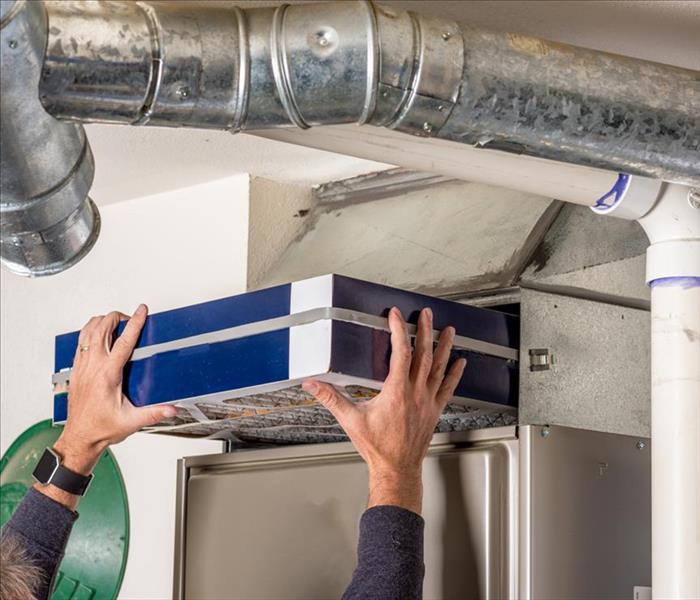 Home furnace air filter replacement.
Home furnace air filter replacement.
Maintenance Tips For Your Home's Furnace
The last thing you want is for your home’s heating system to go out right in the middle of winter. Worse than that, a fire could break out if you are not careful. It is always preferable to avoid fire cleaning services when possible, so follow these few maintenance tips to keep your furnace in great condition all year long.
1. Replace Filters Often
Every heating system has a filter that allows you to breathe clean air free of contaminants. Over time, the filter becomes dirty, making it less effective at filtering out dust and other pieces of debris. You should replace your furnace’s filter once every few months. You may need to do it once a month if you use your HVAC system regularly.
2. Clean Vents and Furnace Ducts
For this kind of maintenance, you may need to hire professionals. Experts qualified in fire cleaning can usually handle this work. Too much dust accumulation in the vents can damage components and make the system not run as efficiently as it should. During this inspection, the professional can also provide a more thorough examination to see if there are any damaged parts. Even a loose belt can lead to a dampening in performance. It is better to do this kind of housework than have to eventually deal with smoke cleaning.
3. Have an Annual Inspection
In the event your furnace seems to be working all right, you should still have someone come out at least once a year to check everything out. This inspection should take place right before the winter season. Most furnace maintenance professionals are busy during the winter because that is when everyone wants the work done. Additionally, if you wait until winter, then you may have to go a day or two without your furnace. When the temperatures drop, it is not fun to be without a heater.
Avoid needing fire cleaning in New Sweden, TX, by taking care of your furnace. Ultimately, it is much more affordable to pay for maintenance than to pay for repairs.
This Is the Smoke Alarm You Need
3/18/2021 (Permalink)
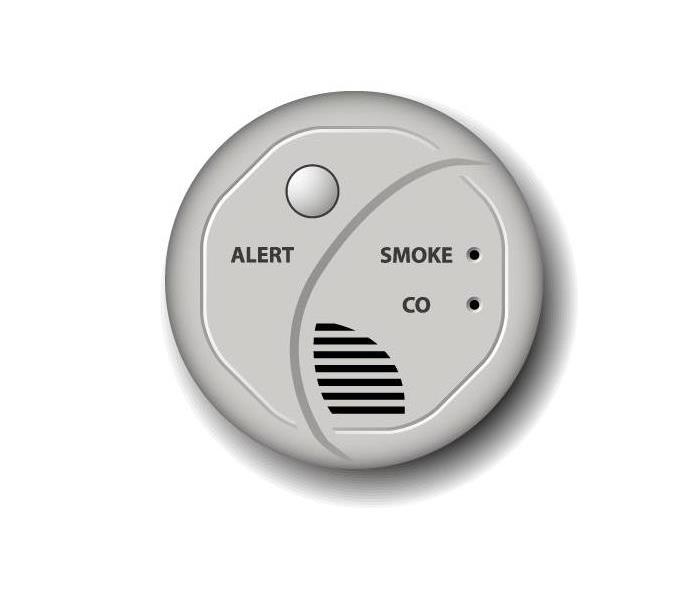 Dual sensor smoke detector.
Dual sensor smoke detector.
How To Choose The Right Smoke Detector
You probably think that simply installing any smoke alarm in your home is enough. However, there are several options to choose from. Read on to find out how to choose the right smoke detector for your particular residence.
1. Consider the Size of Your Home
A bigger home will need more units. When purchasing, consider:
- Number of rooms
- Square feet
- Sleeping location
- Special needs
You need to put a smoke alarm in each room, as well as the hallways leading to bedrooms. Also factor in attics, basements, and both ends of staircases. Essentially, make sure you'll be able to hear the alarm at any time of the day.
2. Choose a Type
If you have a larger residence, you should look into devices that can be wired along with the same network.
- Ionization
- Photoelectric
- Dual-sensor
- Air-sampling
- CO2 combo
There may be regulations in Pflugerville, TX, so make sure to check before installing. Often, these regulations can require hard-wired devices. If this is the case, you have to have them installed by local fire prevention and remediation specialists.
3. Make Sure It Works
This may seem obvious, but you need to test your smoke detectors. Think about fire safety. You may only have 2 minutes to evacuate. Does your alarm do its job in time? Check if batteries need to be replaced. If your system is hard-wired, it may also have backup batteries. Make sure these are in working condition. Keep in mind that placement should also be conducive to monthly testing. If you can't reach the alarm or don't have a ladder, reconsider placement. You should also keep units free of dust and grime that may inhibit usefulness.
Further, look for the circle logo on your units or their packaging. There should be a "UL" denoting that they have been tested and certified by Underwriters Laboratories. This is the most common certification, but there are others. Always do a quick internet search to verify your alarm's standard testing.
If you pick the right smoke alarm and test it monthly, you are doing the best that you can for fire prevention. Practice how to turn off the alarm without dismantling it from the wall or ceiling. Stay safe.
Temporary Business Closure? Business Interruption Insurance Can Help
11/4/2020 (Permalink)
 BI insurance is intended for small to midsize businesses
BI insurance is intended for small to midsize businesses
Here's An Overview
For business owner's in Pflugerville, TX, a fire can test the resilience of the most successful commercial ventures. A business fire means temporary closure, lost income, destroyed equipment and materials, ongoing fixed expenses plus added costs like fire cleaning and restoration services. Business interruption insurance can help ease the impact of a business fire by providing a hedge against uncertain monetary losses.
1. BI insurance underwrites common business expenses. It covers lost net income as well as mortgage, rent and lease payments, loan payments, taxes and employee payroll for a defined period of a business interruption.
2. There are exclusions. Additional insurance may be needed for non-covered outlays and circumstances. These include broken items (glass), flood and earthquake damage, utility costs, undocumented income and pandemics.
3. BI insurance is intended for small to midsize businesses. Companies with 100 or fewer employees and revenues up to $5 million are the norm. Owners can purchase a business owner's policy that combines property, liability and BI coverage, which is typically more cost-effective than buying separate policies.
4. Insurance pay out is usually limited to 30 days. Extensions of up to 360 days can further buoy up operations as a business works to recover its revenue stream. Policies usually have an initial 48-to-72-hour waiting period before reimbursement.
5. The cost of coverage varies. In general, cost depends on a business' geographic location, industry, employee count, the amount of coverage and the business' claims history.
6. Coverage is business-specific. To arrive at a ballpark estimate of adequate coverage, consider a business's gross earnings and revenue projections.
A prolonged business interruption can put pressure on a company's financial statements. BI insurance can neutralize the high cost of closure and give a business economic relief while it rebuilds. Like any insurance, BI is an investment in the future. It's worth a second look.
How to Avoid Home Fires Caused by Candles
9/25/2020 (Permalink)
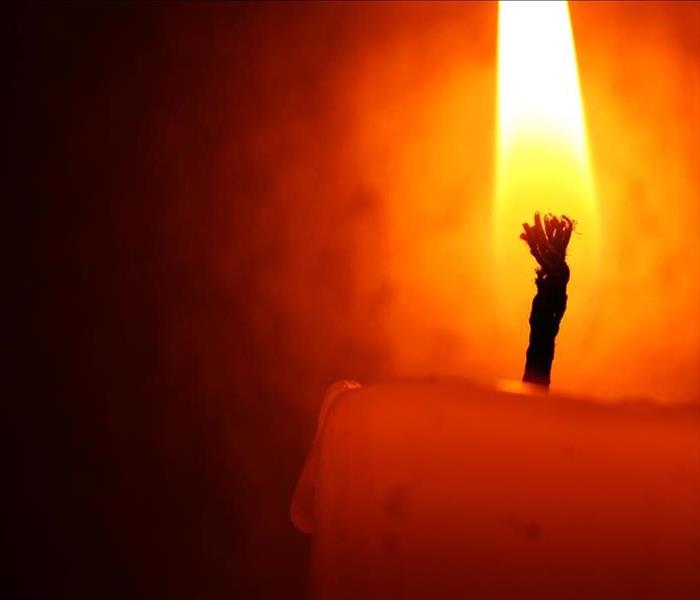 Candles should always be placed in plain sight and spaced reasonably apart
Candles should always be placed in plain sight and spaced reasonably apart
What sets the mood better than a romantic glow? That said, a wayward candle fire could just as easily ruin a special evening. If such an incident takes hold in your house, you will inevitably need a fire damage cleanup specialist to set things right.
Candle Incident Statistics
You may be shocked to learn some data concerning how often candle fires occur:
- They account for 2% of all reported home blazes.
- Every day, there are 21 unique reports of such accidents.
- 60% of all candle-related incidents occur when unsecured combustible material comes into contact with flames.
In consideration of the above, decreasing the number of mishaps caused by candles remains a worthy objective. Luckily, commonsense measures can curb your odds of requiring smoke cleanup and other restoration procedures.
Candle Fire Prevention
Before setting anything alight, consider a flameless alternative. On top of their inherent safety, electric candles sometimes come with flashy features like remote controls and flicker settings. Should you opt for the real deal, forego the use of matches. Instead, use a long, flexible lighter that gives control over the flame’s size and cools nearly instantaneously.
Always keep wax clean and remove flammable remnants such as dust or hair. Never use a plastic container and toss cracked glass. Using a wick trimmer, bring the string to 1/8th of an inch. Note, too, that when wax gets low it becomes unsafe. Stop burning once your jarred candle reaches a half-inch. Non-jarred candles should be retired after arriving at the two-inch mark.
Candles should always be placed in plain sight and spaced reasonably apart. Only extinguish flames with a snuffer, never water, and use them exclusively in properly ventilated rooms.
Nobody wants their home burned by a candle fire, but observation of best practices can help prevent disaster. Simple due diligence can stop your residence from suffering the fate of so many others.
How to Clean Your Electronics After a Fire
9/17/2020 (Permalink)
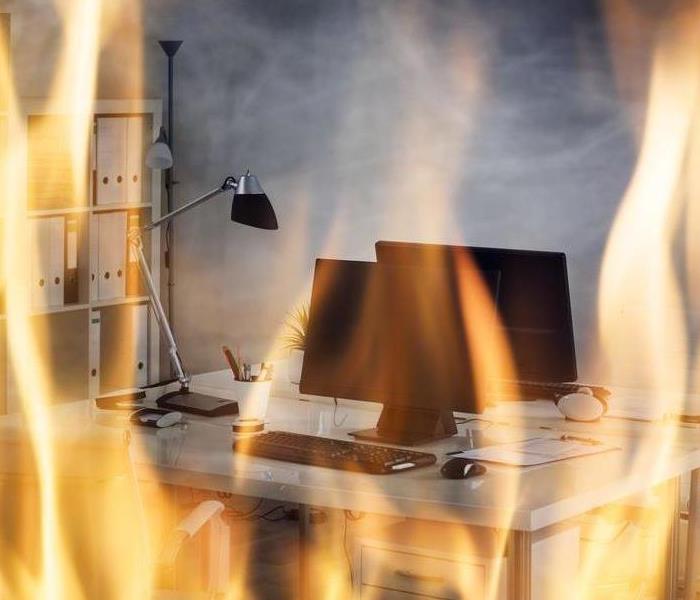 It is deeply frustrating when possessions get destroyed, but computerized equipment can sometimes be saved.
It is deeply frustrating when possessions get destroyed, but computerized equipment can sometimes be saved.
Between tossing everything that has become damaged and hiring a fire restoration service to handle the most difficult aspects of the task, any fire cleanup job is deeply stressful. Often getting lost during the process is the recovery of precious electronics. Never trash them until you have confirmed they are impossible to repair.
Smoke Damage and Electronics
When smoke infects our digital gadgets, it impacts them in three ways:
1. Magnetization, leading to short-circuiting.
2. Corrosion, dramatically shortening their lifespans.
3. Overheating, caused by a thick layer of soot.
Any items displaying evidence of the above conditions should be disposed of, but those that do not may be rehabilitated. Should a fire strike your home in Pflugerville, TX, remember that inspecting your beloved digital toys should automatically be included as part of the fire cleanup.
Cleansing Electronics of Smoke Damage
First, disconnect the device you wish to salvage and remove the batteries or any other existing power source. With a soft, dry towel, wipe your gizmo’s exterior of any residue, then use an air compressor or blow dryer to clear out any outlets or vents. Once this has been done, you can test your device by switching it on. Never do this, however, until the cleaning stage has been completed.
Sadly, your beloved item will likely never operate the way it once did, as ash is virtually guaranteed to compromise proper functioning. Should you detect unusual behavior from your device, have it inspected by a product specialist. You may have taken out warranties on your most prized pieces, but also note that many home insurance policies cover electronics-related losses, so check your provisions.
It is deeply frustrating when possessions get destroyed, but computerized equipment can sometimes be saved. Never let the hectic nature of a fire cleanup undertaking prevent you from granting your favorite gadgets one last shot at life.
3 Types of Smoke Odor Removal
6/4/2020 (Permalink)
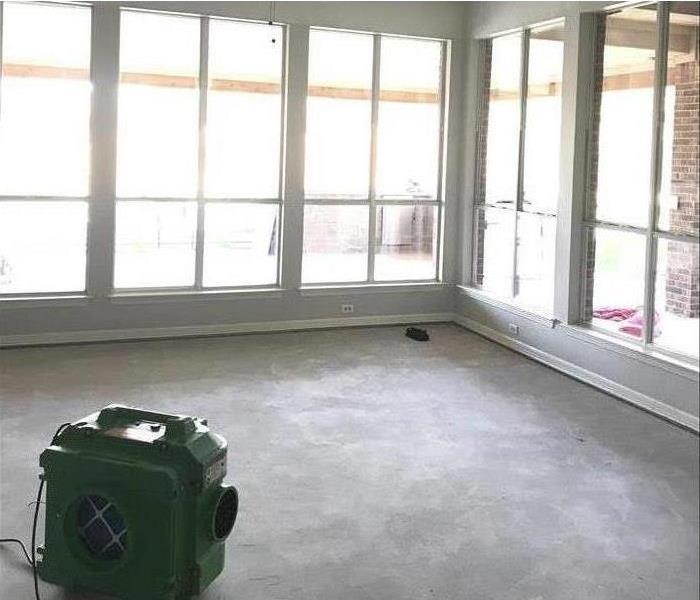 Deodorizing in Austin, TX
Deodorizing in Austin, TX
Smoke Odor Removal
After a fire, home deodorization can be an important step toward getting your Austin, TX, home back in order. Fortunately, a local fire damage restoration service can help with this process. Here are some tools you may see them use.
1. Special Cleaners
During the restoration process, the affected area can be washed with special cleaning solutions. These are designed to help break down and remove soot, as well as help remove odors. The methods used to apply these cleaners will depend on the type of material being cleaned. Curtains and other cloth items can be washed while furniture may need upholstery cleaning. Large solid furniture and walls may be wiped down.
2. Ozone Machine
Even after everything has been cleaned, odor may still linger in the air. The next step of home deodorization is the use of an ozone machine. An ozone machine works by charging oxygen molecules so they temporarily break apart and then recombine with new oxygen molecules to form a triple pairing instead of a double. The new third molecule can then combine with the odor molecule and disperse, leaving the air smelling fresher than before.
3. Deodorizing Paint
Another way to help get rid of fire or cigarette smoke odor is to use a deodorizing paint. After the damages are cleaned up and any necessary repairs are made, the restoration team will begin making your home look as though the fire never occurred. Part of this may include repainting the space, and a deodorizing paint can help prevent the return of any unwelcome odors.
With the help of the right cleaners, an ozone machine, and a good paint, the restoration team working on your home deodorization can restore it to pre-fire conditions. With a little time and work they can have your home looking “Like it never even happened.” Not even a lingering odor should remain. If you have any further questions these professionals can help.
Proper Use of an Electric Space Heater To Heat a Room
2/28/2020 (Permalink)
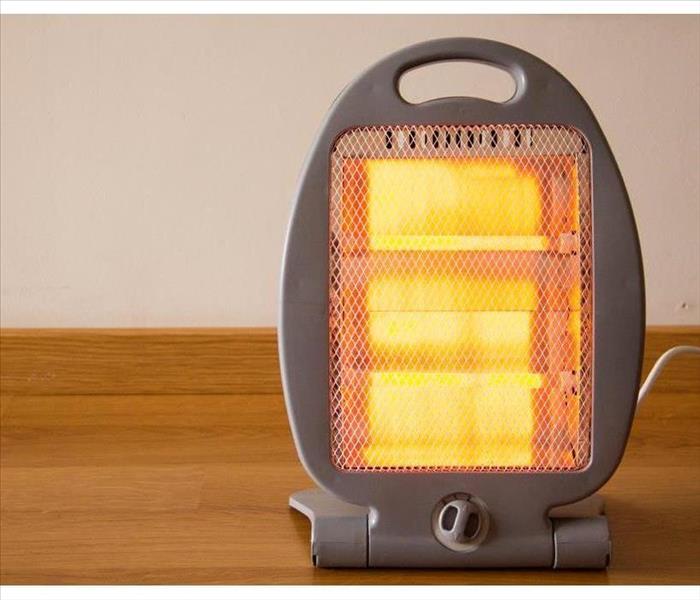 Never plug a space heater into a power strip or an extension cord
Never plug a space heater into a power strip or an extension cord
Follow These Tips To Keep Your Home Warm
An electric space heater is an alternative to your home’s heating system because it warms a small area for overall greater cost-efficiency. However, improper use can not only result in a burned space heater but also a burned house. Space heaters cause thousands of avoidable house fires each year. Follow these tips to keep your home warm while dodging a disaster of your own.
Position It Three Feet Away
The heater should be positioned at least three feet from anything flammable. This includes drywall, curtains, furniture, papers, and clothing. Also, don’t let children and pets come into contact with the heater. They could tip it over, which could cause a fire. It can also be a tripping hazard.
Plug It Directly Into a Wall Outlet
Never plug a space heater into a power strip or an extension cord since overheating can occur and start a fire because of a high current. Plug the heater directly into a wall outlet by itself.
Avoid Leaving It Unattended
Avoid using the heater when you’re not in the room. Be especially mindful to turn it off when you leave the house or go to bed.
Turn It Off When Not in Use
Make sure to unplug your heater when it’s not in use. There’s a chance that it could accidentally be turned on if it’s left plugged in. Carelessness can result in a burned space heater – or more.
Purchase One With Auto-Shutoff
Make sure that you buy a heater with an automatic shutoff function. This safety function forces the unit to shut down if it tips over. It should also automatically turn off after a certain period of time.
Place It on a Proper Surface
Place the heater on a non-flammable surface. Make sure the surface is flat and level.
With portable electric heaters being the leading cause of home fires, it’s important to monitor your unit closely when it’s in use. If your Cele,TX, home has experienced damage from a burned space heater, fire damage cleanup professionals will handle all aspects of the fire and smoke cleanup.
How To Clean Items After a Fire
1/21/2020 (Permalink)
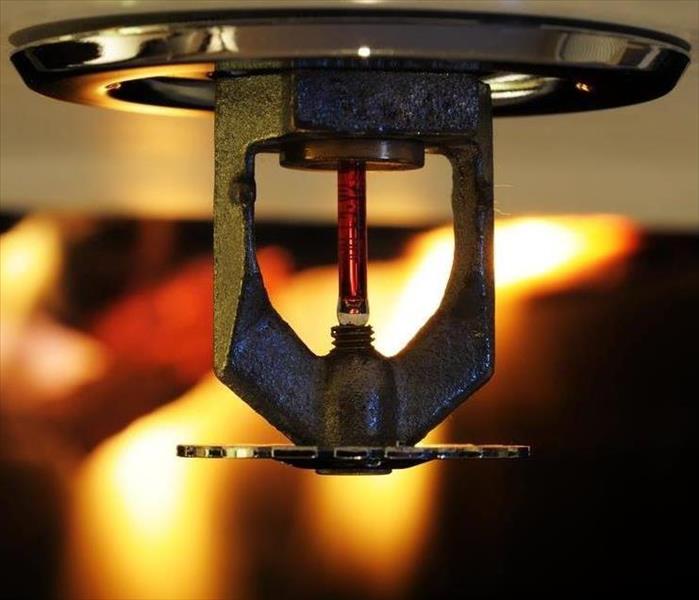 Call in the professionals to get your building back to working order.
Call in the professionals to get your building back to working order.
If you suffer a fire in the workplace, your first concern is whether everyone is safe. Your thoughts will then likely turn to the damage in your Austin, TX, building. If the flames don't destroy or harm materials, the smoke will likely cause some problems. Luckily, there are effective ways to clean many of the items in the workplace. With prompt attention and the right techniques, such as dry-cleaning, you can salvage important belongings and work equipment.
Calling the Pros
A fire in the workplace could leave behind significant damage to building materials, computers and other electronic equipment, documents, furniture and more. A job this size could overwhelm you, but professional fire restoration teams have what it takes to clean and save these items. Cleanup specialists have the following traits:
Years of content cleaning experience
The right equipment
The best techniques and restoration methods
Cleaning Carpets, Furniture, and Clothing
The smell of smoke can remain in an area for months or even years after a fire. Only high-powered tools and dry-cleaning processes will work effectively. Technicians can use these machines on many materials, including clothing items such as uniforms in your office.
Cleaning Documents
If you don't have fire-resistant content storage, paper items such as books, files, maps and photographs can suffer. Using freeze-drying methods, technicians can preserve these belongings and retain their quality.
Other Approaches
What if non-porous items in your building have smoke or fire damage? Things such as wood floors or fixtures may appear lost, but professional crews can save them. Using ultrasonic tools, the team can rid these areas of the smell of smoke and remove soot and ash. Your office can look like it did in its pre-fire state.
Dry-cleaning, freeze-drying and ultrasonic cleaning are all effective approaches after a fire in your office. Call in the professionals to get your building back to working order.
Austin, TX Document Restoration from Fire and Flood
1/14/2020 (Permalink)
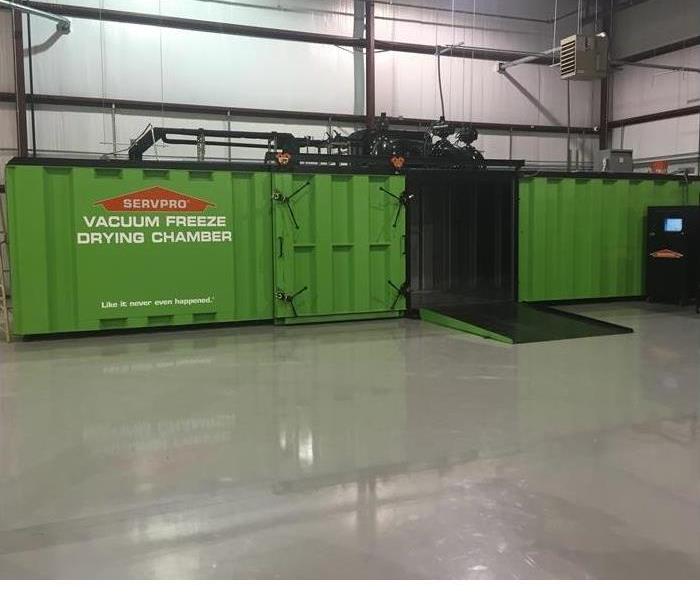 This is the custom built freeze drying chamber for SERVPRO, housed at our corporate office and in operation year round to take care of your documents!
This is the custom built freeze drying chamber for SERVPRO, housed at our corporate office and in operation year round to take care of your documents!
It is an unfortunate fact that most homeowners and business owners experience fires and floods throughout their lifetime. To give you an idea, in 2017 there were 1,319,500 reported fire losses in the United States alone. As a business owner in Austin, Texas, you have a 1 in 13 chance of having a fire or water loss every year. This is a staggering number, considering 75% of business owners are under-insured and 40% of small business owners have no insurance at all. One very important and very costly item to salvage is photos and documents. In many cases, documents must be maintained by law, and after a fire or flood it can be extremely difficult to take care of. One of the many services that SERVPRO of Pflugerville offers is complete document restoration services. These include:
Inventory
Drying
Decontamination/Gamma Irradiation/Sterilization
Cleaning
Deodorizing
Digitizing
Certified Destruction
Some of the many types of documents we work with include:
paper documents
books and magazines
manuscripts and files
photographs, films, negatives, and microfiche
x-rays
blueprints and maps
parchment
Our vacuum freeze-drying process is the only method approved by the National Archives and Records Administration (NARA) and the General Services Administration (GSA).
If you have any questions about how we might be able to help your business recover from a disaster in Austin, please give us a call at 512-990-4776.
How To Choose the Right Smoke Detectors for Your Home
11/23/2019 (Permalink)
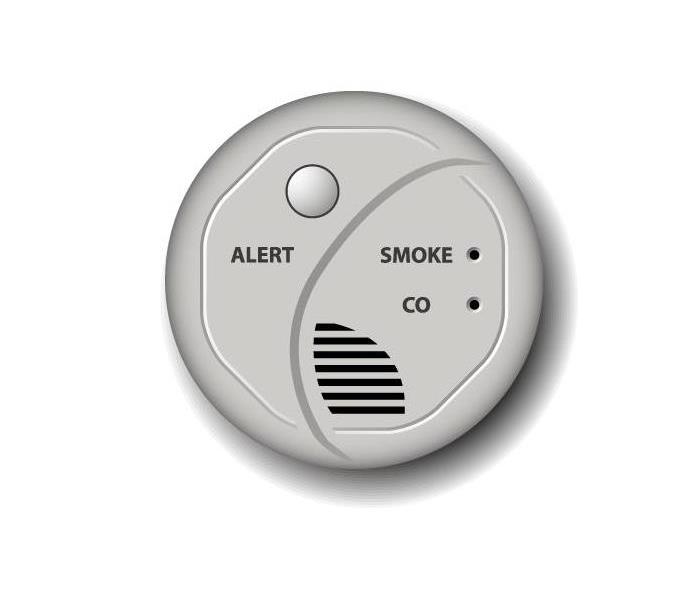 A system of combination or dual-sensor detectors is probably your best bet
A system of combination or dual-sensor detectors is probably your best bet
Factors You Need To Consider When Deciding For a Smoke Detector
A good smoke alarm system can alert you to a fire in your home in Austin,TX, so you can escape more quickly. Choosing the right system is crucial to your family's safety. There are several factors you need to consider when deciding which one is best.
Type of Detector
The first thing you need to decide is the type of smoke detector you want to install. There are several types to choose from:
- Photoelectric
- Ionization
- Dual-sensor
- Air sampling
- Combination
A system of combination or dual-sensor detectors is probably your best bet. The combination detectors also include a carbon monoxide detector, which means you can get better coverage for more issues with fewer devices. The dual-sensor detectors combine ionization devices for detecting small-particle smoke and photoelectric detectors for sensing large-particle smoke. That way, no matter what kind of fire breaks out, your system can detect it.
Source of Power
Smoke alarm systems can be powered in several ways. Many detectors require a 9-volt battery that has to be periodically replaced. You can simplify your replacement schedule if you have a lithium battery or a detector with such a power source built in. Other systems wire the detectors into your home. With such a system, you can go without batteries or just use them as backups.
Location of Detectors
When deciding how many or what type of detectors to buy, you need to consider the size of your home. A large home is better served by a fire safety system in which the detectors are connected. That way, if one goes off, the rest of them go into alarm as well. You may also consider putting photoelectric detectors near the kitchen, as ionization detectors are more easily triggered by smoke from grease. No matter what kind of detectors you get, you need one on every level and both inside and outside each sleeping area.
A reliable smoke alarm system is your first notice when a fire breaks out. Early detection can help you stay safe and avoid the need for extensive fire restoration services.
How To Use a Fire Extinguisher
11/15/2019 (Permalink)
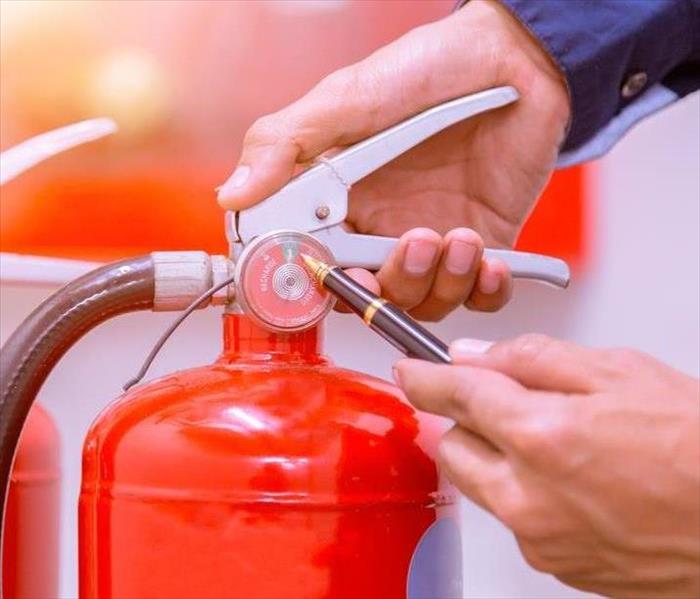 Take time now to prepare for the unexpected.
Take time now to prepare for the unexpected.
As a homeowner in Austin, TX, you should prioritize safety, for both your family and your property. That includes preparing ahead of time for a home fire. While you consider evaluation routes and emergency contacts, it's also beneficial to supply your home with a fire extinguisher as the first line of defense. The red canisters may seem a bit intimidating, but they are designed to help residents. Here are a few tips for wielding one with better care.
1. Pick Appropriate Locations
You want to have extinguishers near areas likely to have a fire; therefore, consider purchasing one for the kitchen and garage. These locations often have several appliances or electrical equipment capable of exposing the house to fire damage. Is your place two stories? If so, put one upstairs in a spot that is easy to access; furthermore, make other family members aware of where they are, and teach them how to use them.
2. Review Procedures
Don't expect to know how to handle these containers. Practice with them. Pick them up and examine the parts. You want to know if they will be able to physically use the device. If it's too heavy consider investing in smaller units. Next, go over the steps for using a fire extinguisher. A popular phrase is P.A.S.S.: pull the pin, aim low, squeeze the handle, and sweep from side to side. As you release the agent, you want to stay as close to the base of the flame as possible. This could help eliminate the flames.
3. Call for Help
Once you've suppressed the blaze, call in a fire restoration company to inspect the premises. The workers can test the area to determine the extent of the problem and recommend recovery services. Whether it's a kitchen fire or lightning strike, they can offer assistance in repairs as well as how to salvage ruined materials. In fact, they have special equipment to remove smoky aromas and remove soot from walls and ceilings.
Take time now to prepare for the unexpected. Purchase safety equipment, and learn how to use a fire extinguisher. It could save your property.
Lightening’s Effect on a Home
11/5/2019 (Permalink)
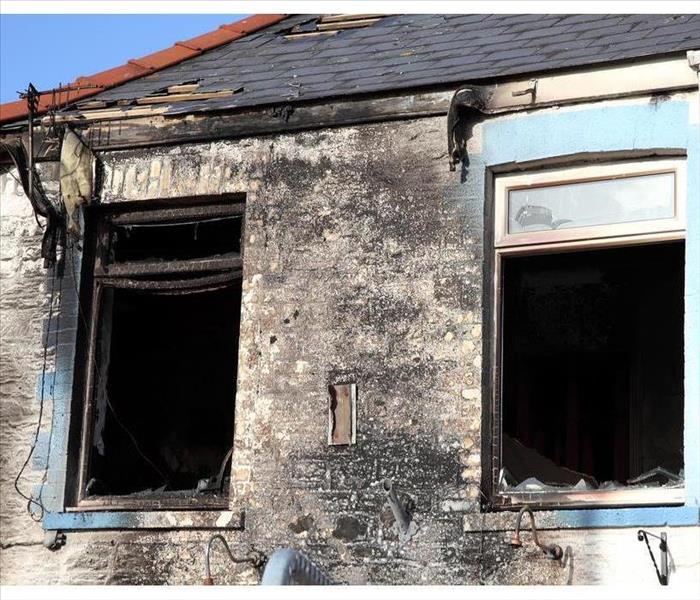 The raw power of Mother Nature can be scary, especially if it results in a lightning fire.
The raw power of Mother Nature can be scary, especially if it results in a lightning fire.
Homeowners in Pflugerville, TX, know that Mother Nature is fickle. While most thunderstorms result in downed branches and potentially window or roof damage, a strong storm can also result in a lightning fire.
How Is a Home a Conduit?
Most people may feel like being inside the home means protection from a severe storm. While typically the case, on average there are more than 22,000 fires reported that are caused by lightning. These electrified bolts naturally find the easiest route from the sky to the ground. A home is actually filled with a plethora of items for these bolts to travel through. These include:
Gas and water pipes
Electric lines
Phone lines
Cable and internet lines
Gutters
Downspouts
Metal window frames
It also can travel from one conduit to another, known as a side flash.
Three Types of Damage
If your home is struck, there are three main types of damage that can occur.
Fire – A house fire is the most common danger. Within the home are flammable materials, both structurally and your belongings, that can be ignited. Since the bolt can travel through wires, a lightning fire that starts in the attic has the potential to follow circuits throughout the house.
Power Surge – The power behind a bolt of lightning is immense. If it enters the electrical system, along with a potential fire, it can create a surge that damages any items plugged into the electrical system.
Shock Wave – That thunderous clap of thunder hopefully heard off in the distance is actually the shock waves of lightning. If it happens close to a home, its power is strong enough to crack concrete, bricks, stones and foundations; shatter windows; damage plaster walls; leave behind trenches in soil; and produce shrapnel that can become embedded in walls.
The raw power of Mother Nature can be scary, especially if it results in a lightning fire. While most people luckily won’t have to deal with it, if a bolt affects your home, contact a professional to get your home back in shape.
Do’s and Don’ts if You Suspect a Gas Leak
10/16/2019 (Permalink)
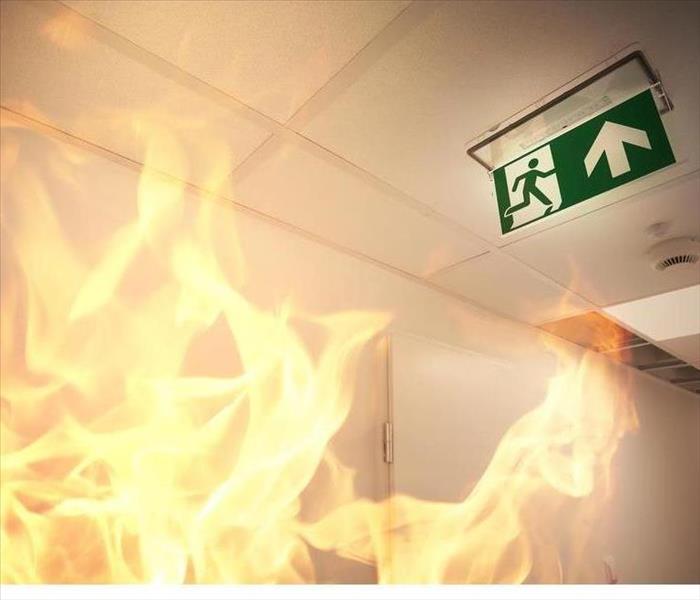 If your home experiences a gas fire, fire damage cleanup professionals can restore it to its original state.
If your home experiences a gas fire, fire damage cleanup professionals can restore it to its original state.
Do’s and Don’ts If You Suspect a Gas Leak
The smell of sulfur at your home in Pflugerville, TX, can be an ominous sign of a natural gas leak. It’s important to act on it immediately. A gas leak could potentially result in a gas fire or explosion, turning into a major disaster for your home and residents.
Things to Avoid
In a potentially explosive situation, it’s what you don’t do in this incendiary environment that’s of primary importance. Be sure to avoid:
Smoking
Turning on anything electrical (switches, lights, appliances, televisions, computers)
Plugging in or unplugging electronics
Using phones (landline or cell phones)
Operating garage doors
Using candles
All of the above are potential ignition sources, which will likely result in a gas explosion if you have a natural gas leak. Even a small, undetectable spark such as that from a cell phone can cause a gas fire that will immediately create an explosion. If your first impulse is to always reach for your smartphone, resist it. Static electricity is another risk; it can be generated by simply walking across the carpet.
Immediate Actions to Take
The sulfur or rotten egg smell that is associated with a natural gas leak is actually an additive to make the typically odorless gas detectable. The sooner you act, the less chance of a disaster occurring. If the odor is very weak, it might be as simple as turning off the gas valve on your gas appliances (e.g., stove, fireplace, water heater).
However, if you notice a strong odor, get everyone out of the house immediately, including all pets. You may be inclined to open windows for fresh air, but time is of the essence and distancing yourself should be your main priority. Once you’re out of close range of the house call the utility company and/or fire department to come out and check for the leak.
If your home experiences a gas fire, fire damage cleanup professionals can restore it to its original state.
Manda Smoke and Soot Cleanup
1/10/2018 (Permalink)
Smoke and soot is very invasive and can penetrate various cavities within your home, causing hidden damage and odor. Our smoke damage expertise and experience allows us to inspect and accurately assess the extent of the damage to develop a comprehensive plan of action.
Smoke and soot facts:
Hot smoke migrates to cooler areas and upper levels of a structure.
Smoke flows around plumbing systems, seeping through the holes used by pipes to go from floor to floor.
The type of smoke may greatly affect the restoration process.
Different Types of Smoke
There are two different types of smoke–wet and dry. As a result, there are different types of soot residue after a fire. Before restoration begins, SERVPRO of Pflugerville will test the soot to determine which type of smoke damage occurred. The cleaning procedures will then be based on the information identified during pretesting. Here is some additional information:
Wet Smoke – Plastic and Rubber
Low heat, smoldering, pungent odor, sticky, smeary. Smoke webs are more difficult to clean.
Dry Smoke – Paper and Wood
Fast burning, high temperatures, heat rises therefore smoke rises.
Protein Fire Residue – Produced by evaporation of material rather than from a fire
Virtually invisible, discolors paints and varnishes, extreme pungent odor.
Our Fire Damage Restoration Services
Since each smoke and fire damage situation is a little different, each one requires a unique solution tailored for the specific conditions. We have the equipment, expertise, and experience to restore your fire and smoke damage. We will also treat your family with empathy and respect and your property with care.
Have Questions about Fire, Smoke, or Soot Damage?
Call Us Today – (512) 990-4776




 24/7 Emergency Service
24/7 Emergency Service

























